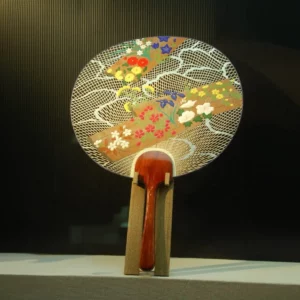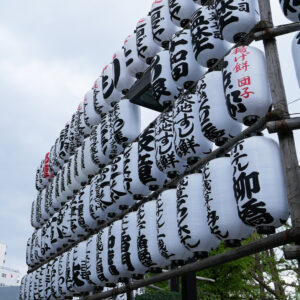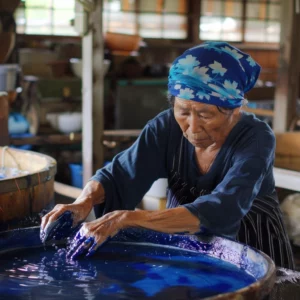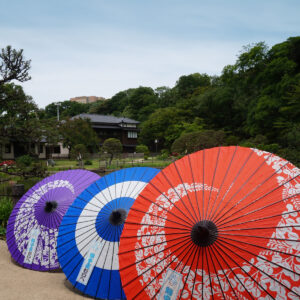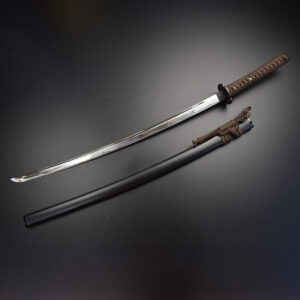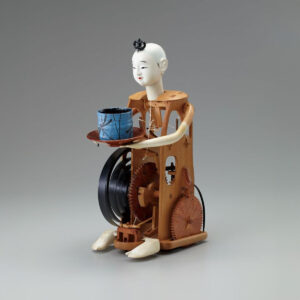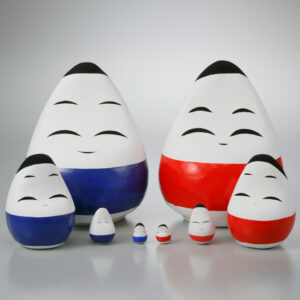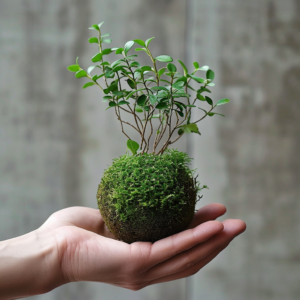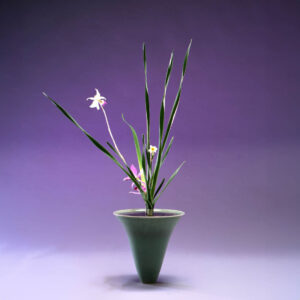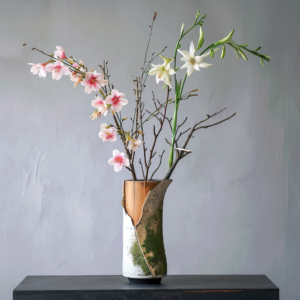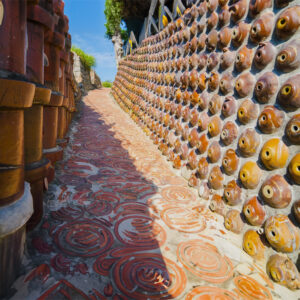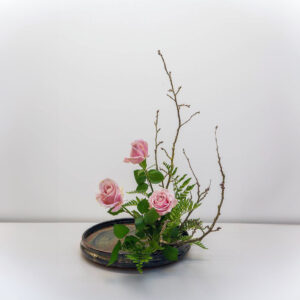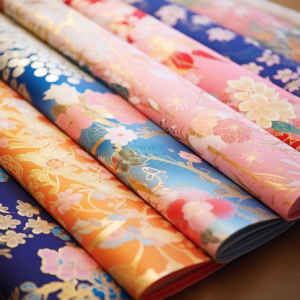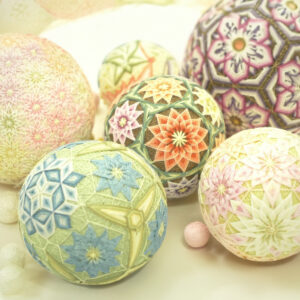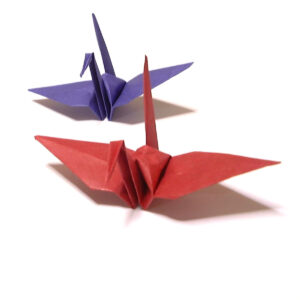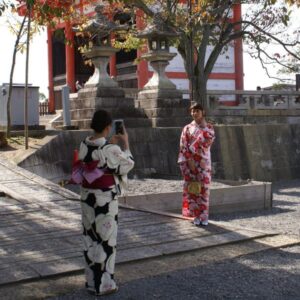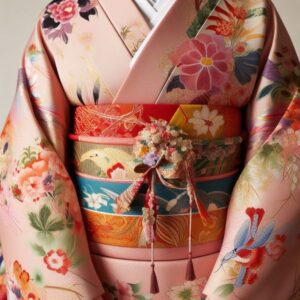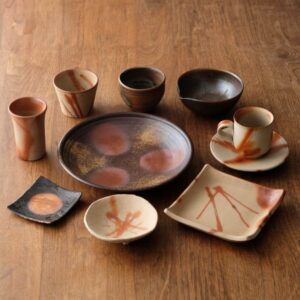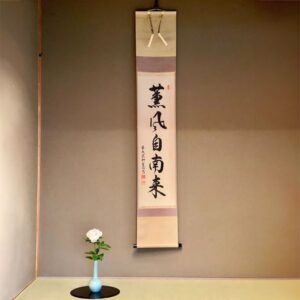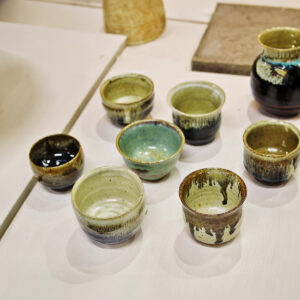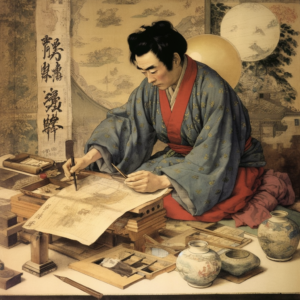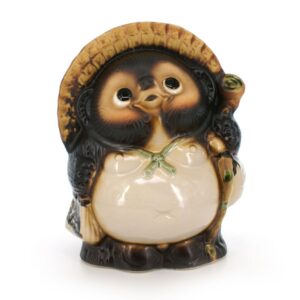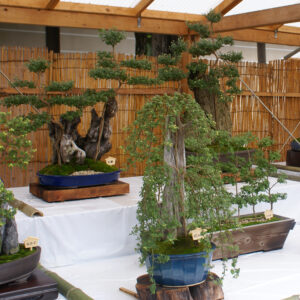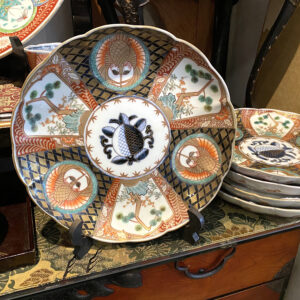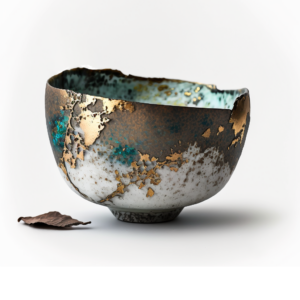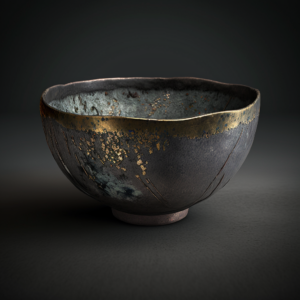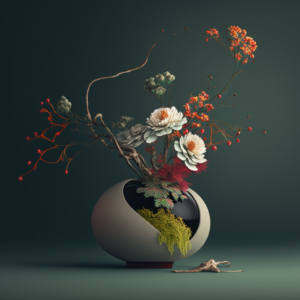Japanese decorative arts, steeped in the rich history and culture of Japan, represent a harmonious fusion of aesthetics, functionality and tradition. These artistic forms have evolved over the centuries, reflecting varied influences while preserving the deep essence of Japanese tradition. In this article, we will explore the main aspects of Japanese decorative arts.
Japanese Ceramics
Japanese ceramics are renowned throughout the world for their finesse and elegance. Varying styles such as Imari porcelain, Seto ceramics, and Bizen pottery each have their own distinct charm. Artisans use ancestral techniques to create pieces that embody simplicity, harmony and natural beauty.
Fabrics and Textiles
Textile art in Japan is manifested through traditional techniques such as silk weaving, indigo-dyeing and Shibori (resistance dyeing). Kimonos, traditional Japanese clothing, are often adorned with delicate patterns and intricate embroidery, reflecting the delicacy and attention to detail of the artisans.
Japanese Lacquer
Japanese lacquer, or “urushi,” is an artisanal technique which consists of applying successive layers of resin extracted from tree lacquer. Lacquered objects, such as lunch boxes, trays and jewelry, embody the fusion of art and utility. These objects are often decorated with delicate patterns and scenes inspired by nature.
The Art of Paper
Washi, a traditional Japanese paper, is used for a variety of decorative items such as lanterns, screens and prints. The often abstract or nature-inspired designs capture the essence of Japanese simplicity and connection with nature.
Ukiyo-e Prints
Ukiyo-e prints, originating from the Edo period (17th-19th centuries), are popular works of art that have had a significant influence on Western art. Made by artists such as Hokusai and Hiroshige, these prints depict scenes of daily life, landscapes and kabuki actors with remarkable precision.
Metal Arts
Japanese silversmithing, whether it is the crafting of exquisite katana (swords) or decorative metal objects such as vases and lanterns, demonstrates the expertise of Japanese artisans in metalworking. Intricate details and elaborate patterns add an artistic dimension to these functional objects.
Japanese decorative arts transcend simple utilitarian function to become artistic expressions deeply rooted in Japanese culture and spirituality. The fusion of tradition and innovation, simplicity and sophistication, creates a unique artistic legacy that continues to inspire and amaze across the world.
Uchiwa Fans: A Cultural Treasure of Japan
Uchiwa fans are emblems of Japanese elegance and tradition. They are much more than just accessories for cooling off. They embody a rich history, deep…
Stylist Yohji Yamamoto: The Master of Avant-Garde Fashion
Yohji Yamamoto’s stylist is one of the most influential and respected stylists in the fashion industry. His work is distinguished by asymmetrical cuts, deconstructed silhouettes…
Chochin Lanterns: The Timeless Brilliance of Japanese Culture
At the heart of rich Japanese culture is a luminous and captivating tradition: Chochin lanterns. These lanterns are symbols of conviviality and artisanal beauty. They…
Discovering Japanese Indigo: Tradition, Culture and Art
For centuries, indigo has held a special place in Japanese culture and craftsmanship. It is much more than just a dye: it is a symbol…
Japanese Wasaga Umbrellas: A Traditional Art Reinvented
In the heart of Japan’s winding streets and bustling markets lies an often overlooked artisanal treasure: Japanese Wasaga parasols. These umbrellas combine functionality and aesthetics.…
The Art of Japanese Swords: Between Tradition and Perfection
Japanese swords are often referred to under the generic term “katana”. They embody a fascinating blend of art, technology and tradition. These iconic weapons have…
The Karakuri Ningyō: A Masterpiece of Japanese Ingenuity
Karakuri Ningyō, or mechanical dolls, represent a fascinating part of traditional Japanese engineering. These animated works of art have a rich history. They are the…
Okiagari-koboshi: Japanese Resilience Dolls
Okiagari-koboshi dolls, also known as Okiagari-kobōshi, are a form of traditional Japanese crafts. Indeed, this craft embodies strength, perseverance and resilience. These little stylized dolls…
The Kokedama: The Japanese Art of the Vegetable Moss Ball
The Kokedama, a form of Japanese plant art, has gained popularity in recent years. Indeed, it is a creative alternative to traditional flower pots. This…
The Ikenobo School: The Elegance of Japanese Floral Art
The Ikenobo school is one of the oldest and most prestigious schools of Japanese flower arranging, also known as “Ikebana”. Founded over 550 years ago…
The Mishō-ryū School of Ikebana: Japanese Floral Heritage
The Mishō-ryū school, also known as 未生流, is a school of Ikebana, Japanese floral art. Founded in 1807 by Mishōsai Ippo during the late Edo…
Tokoname Ceramics: Japanese Artisanal Heritage
The city of Tokoname, nestled on the central coast of Japan, is renowned for its exceptional heritage in the art of pottery and ceramics. This…
The School of Ikebana Ohara: A Japanese Floral Art in Constant Evolution
Ikebana, die traditionelle japanische Kunst des Blumensteckens, fand in der Ohara-ryū-Schule (小原流) einen besonderen Ausdruck. Diese 1912 von Unshin Ohara gegründete Schule hat sich seitdem…
Japanese Washi: Tradition and Craftsmanship in the World of Paper
Washi, a national treasure of Japan, embodies the very essence of traditional craftsmanship and paper art. This unique form of Japanese paper is more than…
Temari: The Japanese Art of Perfection in Spheres
At the heart of Japanese tradition, among the treasures of craftsmanship, resides the Temari. An artistic heritage of infinite richness, weaving delicacy, precision, and beauty…
Origami: History and Meaning of the Art of Japanese Folding
Origami, an ancient Japanese art of paper folding, represents much more than simple paper figures. They are the symbol of creativity, precision and patience. This…
Japanese Yukata: Summer Elegance and Tradition
Japanese yukata are a traditional form of clothing in Japan, known for its elegant simplicity and comfort. These lightweight kimonos are often worn during the…
Discover the Cute Art of Crochet: Amigurumi
Amigurumi, a Japanese word that literally means “crocheted toy,” is an art form that has captured the hearts of many craft enthusiasts around the world.…
The Traditional Japanese Kimono: History, Meaning and Timeless Elegance
The kimono is one of Japan’s most iconic and elegant traditional garments. This garment, which dates back centuries, embodies both Japanese culture and the art…
Bizen Ceramics in Japan: Ancient Art and Living Tradition
Bizen ceramics (備前焼, Bizen-yaki) is one of Japan’s cultural treasures, an age-old art form that embodies simplicity, rusticity and natural beauty. Originating from the Bizen…
Kakemono: The Japanese Art of the Painted Scroll
Kakemono, or painted hanging scrolls, are a traditional Japanese art form that dates back over a thousand years. These unique works of art, created on…
Discover the beauty of Mashiko pottery
Mashiko pottery, known as Mashiko-yaki in Japanese, is a distinctive type of pottery originating from the city of Mashiko, Tochigi prefecture in Japan. With a…
Nishimuraya Yohachi: A renowned woodblock publisher in the ukiyo-e era
Nishimuraya Yohachi was one of the most influential and renowned woodblock print publishers of the ukiyo-e era in late 18th-century Japan. His work helped shape…
Shigaraki ceramics: the rustic beauty of Japanese art.
Shigaraki ceramics are a traditional Japanese art form dating back centuries. It originated in the town of Shigaraki in Shiga prefecture, in the western part…
Miniaturized Beauty: Discover the fascinating Japanese art of bonsai
Bonsai are miniature trees grown in pots and shaped by pruning and shaping their branches and roots. Although the art of bonsai is practiced in…
IMARI Porcelain – ARITA
Imari Arita porcelain is an art form that was developed in the city of Arita, located in Saga Prefecture, Japan. It is a technique that…
The ancient art of Raku: beauty and tradition
History and Origin Raku (楽焼, raku-yaki) is a traditional Japanese ceramic glazing technique developed in the Edo period (1600-1868). The word raku comes from an…
WABI SABI, asymmetry, roughness, simplicity
WABI SABI is a concept inspired by Japanese aesthetics, which has spread throughout the world. It is an art of living that consists of finding…
japanese vases for ikebana
Ikebana vases are an important feature of traditional Japanese floral art. This style of flower arrangement has a long history and rich culture, and Ikebana…

